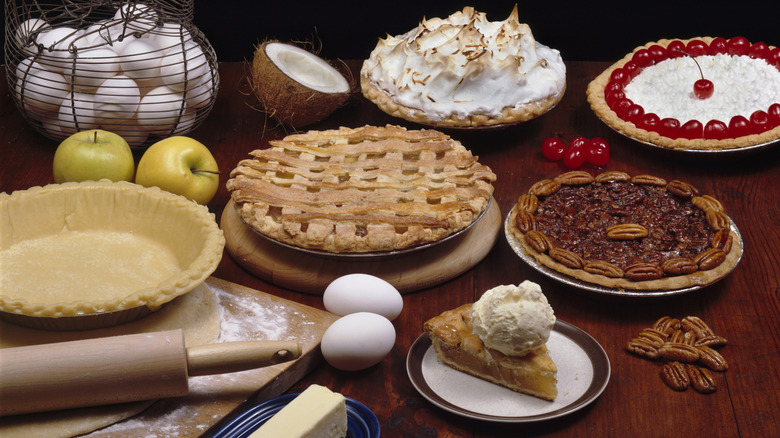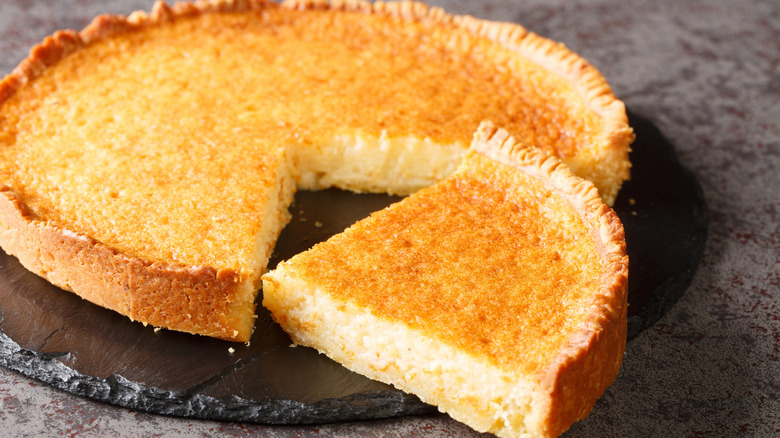The Creamy Great Depression Pie Everyone Forgot About
We may receive a commission on purchases made from links.
Buttermilk pie, a deceptively simple custard dessert, earned its place among Southern food standards not through flash or grandeur, but through its resilience and humble origins. This creamy treat was born out of necessity — often made with what was on hand during the leanest times of the Great Depression. The pie features a butter crust cradling a whisked mix of sugar, fine cornmeal, unsalted butter, egg yolks, sour cream, buttermilk, and vanilla paste, with a touch of cardamom and nutmeg if you have them on hand.
Lacking seasonal fruit, exotic imports, or a variety of spices, Great Depression bakers and home cooks leaned into pantry staples, much like they did with the simple water pie or mock apple pie made from Ritz crackers. Over time, the pie became especially popular in places like Texas, where buttermilk was inexpensive and well-integrated into the cuisine.
Today, it's remembered nostalgically by Southern cooks and in cookbooks that pay tribute to Black Southern food traditions, like Nicole Taylor's "The Up South Cookbook." Its timeless appeal makes it a perfect example of forgotten culinary gems, and it's just one of many old-fashioned Southern desserts ready for a revival!
Buttermilk pie's evolution throughout time
Just as a parbaked butter pie crust offers the ideal textural contrast today — a flaky shell cradling a creamy filling — its historical predecessor was a testament to thrift and resilience. Early buttermilk pies were often made with lard in place of butter, depending on availability, and the crusts were sometimes hand-formed without a pie tin, pressed into cast iron or ceramic.
The pie's heart lies in its filling. In lean times, home bakers relied on what was on hand: dry goods like sugar, flour, and cornmeal, before folding in wet ingredients. Cornmeal, in particular, played a dual role — it added structure to the custard, giving it a firm yet creamy bite, and it was a common staple in Southern homes. However, these days buttermilk pies sometimes omit the cornmeal — which is more often seen in chess pies — and solely use flour.
The star ingredient was and remains the buttermilk, which became a beloved tool for imparting richness, tang, and a distinctive texture to baked goods. Its role in buttermilk pie mirrors its use in simple buttermilk biscuits: practical, flavorful, and deeply rooted in tradition.
Historically, buttermilk pie was often served warm or at room temperature. In an era before widespread refrigeration, pies were typically baked and consumed on the same day. While chilling the pie became common later for convenience and a firmer set, its traditional enjoyment was often a simpler, more immediate pleasure.


